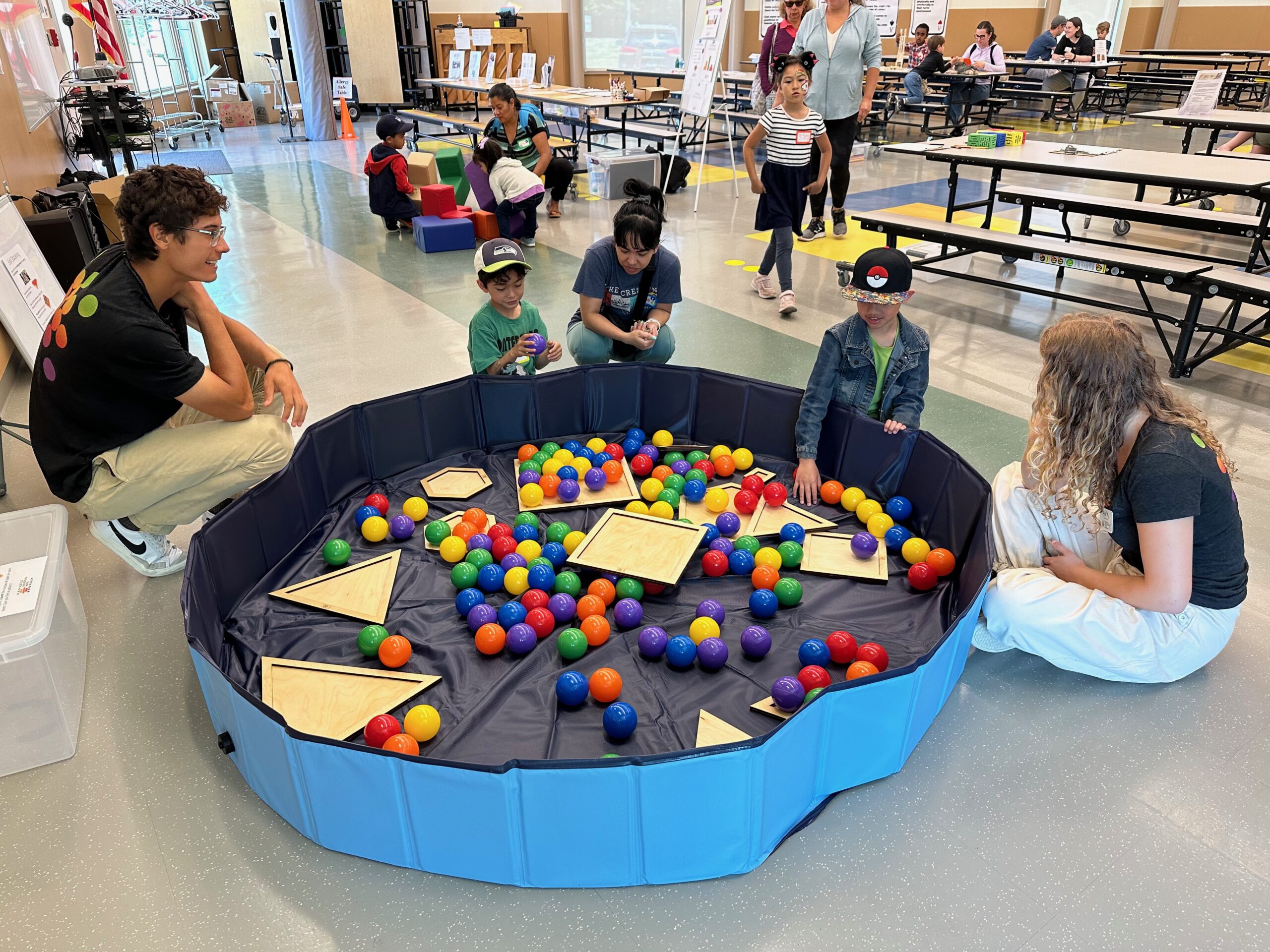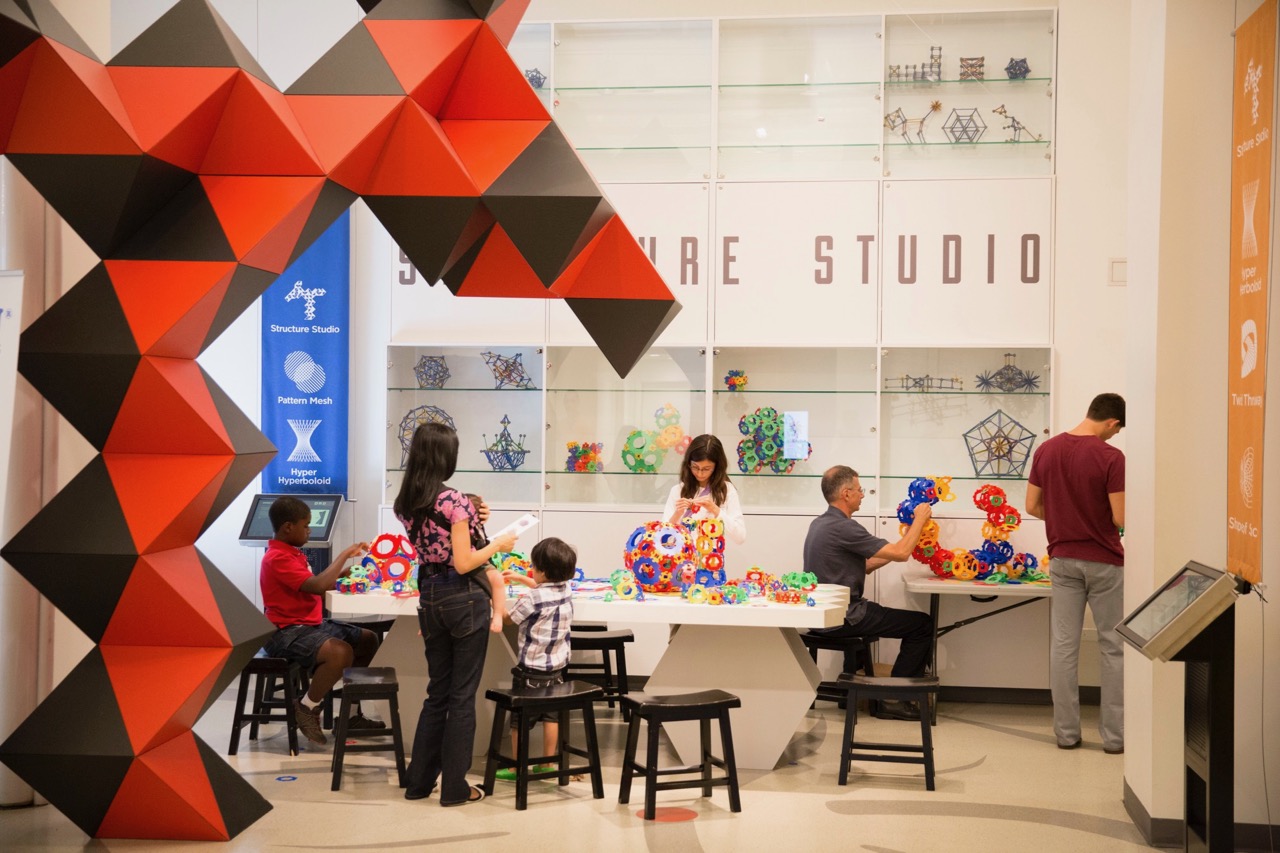Mathematics is more than just numbers and equations—it’s a universal language that reveals the mysteries of the universe. The National Museum of Mathematics, also known as MoMath, transforms this concept into an interactive and engaging experience. Whether you’re a math enthusiast, an educator, or simply curious about the world of numbers, MoMath offers a one-of-a-kind journey into the beauty and applications of mathematics. Located in the vibrant heart of Manhattan, this museum invites visitors to explore, interact, and marvel at the wonders of math through hands-on exhibits and immersive activities.
Many people may not initially find the idea of visiting a math museum exciting. However, MoMath has redefined what a museum can be by seamlessly blending education with entertainment. It’s not merely a place to learn; it’s a place where visitors can play, discover, and be amazed by the wonders of mathematics. Whether you’re a student, a parent, or a lifelong learner, MoMath provides something for everyone, making it an ideal destination for all ages.
This article will guide you through the Math Museum of New York, uncovering its history, exploring its exhibits, highlighting its educational programs, and examining its impact on fostering a passion for mathematics. By the end of this piece, you’ll understand why MoMath is celebrated as one of the most innovative museums globally and why it’s a must-visit for anyone interested in STEM education.
Read also:Exploring Pete Hegseths Personal And Professional Life
Table of Contents
- The Origins of the Math Museum of New York
- Location and Accessibility
- Delving into the Exhibits at MoMath
- Interactive Learning at MoMath
- Educational Programs and Workshops
- The Impact of MoMath on Education
- Community Engagement and Outreach
- Tickets and Admission
- Tips for Visiting the Math Museum of New York
- The Future of MoMath
The Origins of the Math Museum of New York
The Math Museum of New York, officially recognized as the National Museum of Mathematics, was conceptualized in 2009 by Glen Whitney, a mathematician and former hedge fund manager. Whitney envisioned a space where people could experience mathematics in a fun and interactive manner. After years of meticulous planning and fundraising, MoMath officially opened its doors to the public in December 2012, marking a significant milestone in the world of STEM education.
Situated in the bustling Flatiron District of Manhattan, MoMath quickly earned recognition as a trailblazer in STEM education. Its mission is to enhance the public’s understanding and appreciation of mathematics by offering engaging and hands-on experiences. The museum’s success underscores the growing demand for making mathematics accessible and enjoyable for people of all ages.
Key Milestones in MoMath's Journey
- 2009: Glen Whitney establishes the concept of MoMath, laying the foundation for an innovative educational institution.
- 2012: MoMath officially opens its doors, welcoming visitors from around the world to its interactive exhibits.
- 2015: The museum expands its educational programs, reaching a broader audience of schools and communities.
- 2020: Amidst the challenges posed by the pandemic, MoMath adapts by introducing virtual exhibits and online learning opportunities, ensuring its mission continues to thrive.
Location and Accessibility
MoMath is conveniently located at 11 East 26th Street in the Flatiron District of Manhattan. Its central location makes it easily accessible via public transportation, including buses and subways. Visitors can reach the museum by taking subway lines 4, 5, 6, N, Q, R, W, L, or PATH.
Beyond its strategic location, MoMath is dedicated to ensuring accessibility for all visitors. The museum features wheelchair access, elevators, and accommodations for individuals with disabilities. Families with strollers will also appreciate the museum’s thoughtfully designed layout, which prioritizes convenience and inclusivity.
How to Reach MoMath
- Subway: Take the 4, 5, or 6 train to 23rd Street, or the N, Q, R, or W train to 28th Street.
- Bus: Use the M1, M2, M3, or M4 bus routes to conveniently reach the museum.
Delving into the Exhibits at MoMath
One of MoMath’s standout features is its diverse array of exhibits, designed to captivate visitors of all ages. From interactive displays to immersive installations, each exhibit offers a unique avenue to explore mathematical concepts. Below are some of the most beloved exhibits at MoMath:
1. Math Midway
Math Midway is a traveling exhibit that showcases the playful side of mathematics. It features a variety of hands-on activities, such as the "Ring of Fire," where visitors can create mesmerizing shapes with light, and the "Square-Wheeled Trike," which demonstrates how square wheels can roll smoothly on a curved surface. This exhibit is a testament to the museum’s commitment to making math both fun and educational.
Read also:Does Rachel Maddow Have Children Exploring Her Personal And Professional Life
2. Enigma Cafe
The Enigma Cafe is a puzzle-themed exhibit where visitors can solve a range of mathematical puzzles. This exhibit is ideal for those who enjoy a mental challenge and wish to enhance their problem-solving skills in a relaxed environment. Whether you’re a seasoned puzzle enthusiast or a newcomer, the Enigma Cafe offers something for everyone.
Interactive Learning at MoMath
At MoMath, learning transcends passive observation; it becomes an interactive and dynamic experience. The museum’s exhibits are meticulously designed to encourage visitors to engage with mathematics in creative and meaningful ways. Whether it’s manipulating geometric shapes or exploring the intricate patterns of symmetry, visitors are invited to actively participate in their learning journey.
Research indicates that interactive learning is significantly more effective than traditional methods. By enabling visitors to "do" rather than merely "see," MoMath fosters a deeper understanding of mathematical concepts. This approach aligns with the principles of STEM education, which emphasize hands-on learning and real-world applications, making the museum an invaluable resource for learners of all ages.
Advantages of Interactive Learning
- Enhanced Understanding: Interactive learning improves comprehension and retention of mathematical concepts.
- Critical Thinking: It encourages visitors to think critically and develop problem-solving skills.
- Engagement: It makes learning enjoyable and captivating for individuals of all ages, ensuring a memorable experience.
Educational Programs and Workshops
MoMath offers a wide array of educational programs and workshops tailored for students, teachers, and families. These programs are designed to cater to the unique needs of different age groups and skill levels, ensuring that everyone can benefit from the museum’s extensive resources.
Programs for Students
MoMath’s student programs aim to make mathematics exciting and relevant. From field trips to after-school programs, students have the opportunity to explore math in a fun and interactive manner. The museum also provides specialized workshops for advanced learners, such as coding and robotics classes, which further enhance their skills and knowledge.
Professional Development for Teachers
MoMath acknowledges the critical role educators play in shaping young minds. The museum offers professional development workshops that equip teachers with innovative strategies and resources to incorporate interactive learning into their classrooms. By empowering educators, MoMath contributes to the broader goal of enhancing STEM education.
The Impact of MoMath on Education
Since its inception, MoMath has played a pivotal role in transforming STEM education. By cultivating a positive perception of mathematics, the museum has inspired countless individuals to pursue careers in STEM fields. A study by the National Science Foundation highlights the crucial role museums like MoMath play in fostering interest in science and technology.
MoMath’s influence extends far beyond its physical location. Through its online resources and virtual exhibits, the museum reaches a global audience, providing access to high-quality educational content for all. Its commitment to innovation ensures that it remains a leader in STEM education.
MoMath's Impact in Numbers
- Over 1 million visitors since its opening in 2012.
- Partnerships with more than 500 schools nationwide.
- More than 50,000 students participate in MoMath’s educational programs annually.
Community Engagement and Outreach
MoMath is deeply committed to engaging with and supporting its local community. The museum offers free admission days, scholarships for underprivileged students, and outreach programs for underserved communities. By eliminating financial barriers, MoMath ensures that everyone has the opportunity to experience the magic of mathematics.
Beyond its local efforts, MoMath collaborates with organizations worldwide to promote STEM education. Through partnerships with international museums and educational institutions, the museum continues to expand its reach and impact, solidifying its role as a global leader in math education.
Tickets and Admission
Visiting MoMath is both convenient and affordable. General admission tickets start at $18 for adults and $14 for children, seniors, and students. Museum members enjoy free admission and exclusive perks, such as early access to new exhibits and special events.
For groups planning to visit, MoMath offers discounted rates and customizable packages. Families, schools, and corporate groups can all benefit from the museum’s group programs, which include guided tours and interactive workshops, ensuring a memorable experience for everyone.
How to Secure Your Tickets
- Online Booking: Visit the MoMath website to purchase tickets online.
- Reserve Early: Book tickets in advance to guarantee availability.
- Look for Promotions: Keep an eye out for special promotions and discounts to maximize your savings.
Tips for Visiting the Math Museum of New York
Preparing for your visit to MoMath can significantly enhance your experience and ensure you make the most of your time at the museum. Below are some practical tips to help you get the most out of your trip:
1. Plan Your Visit
Review the museum’s schedule and plan your visit around special events or exhibits that interest you. Arriving early can help you avoid crowds and provide ample time to explore the museum’s many attractions.
2. Wear Comfortable Footwear
MoMath is a spacious museum with numerous exhibits to explore. Wearing comfortable shoes will ensure you can enjoy your visit without discomfort, allowing you to fully immerse yourself in the museum’s offerings.
3. Bring a Notebook
If you’re a student or educator, consider bringing a notebook to jot down notes or ideas inspired by the exhibits. This practice can help you discover new ways to incorporate math into your studies or teaching, making your visit even more rewarding.
The Future of MoMath
As technology continues to evolve, MoMath is poised to expand its offerings and reach an even broader audience. Plans for the future include the development of new exhibits, enhanced virtual experiences, and increased partnerships with educational institutions worldwide. MoMath’s unwavering commitment to innovation ensures that it will remain a leader in STEM education for years to come.
By continuing to inspire curiosity and foster a love for mathematics, MoMath will play a vital role in shaping the next generation of thinkers and problem solvers. Its dedication to excellence ensures that it will remain a beacon of inspiration in the world of math education.
Conclusion
In summary, the Math Museum of New York offers an unparalleled opportunity to explore the fascinating realm of mathematics. From its interactive exhibits to its comprehensive educational programs, MoMath inspires curiosity and cultivates a love for learning. Whether you’re a student, an educator, or a lifelong learner, a visit to MoMath is sure to leave a lasting impression.
We invite you to share your thoughts and experiences in the comments below. Have you visited MoMath? What was your favorite exhibit? Don’t hesitate to explore our other articles on STEM education and museums. Thank you for reading, and we hope to see you at MoMath soon!
References:
- National Science Foundation. (2020). The Role of Museums in STEM Education.
- Whitney, G. (2012). The Story of MoMath. National Museum of Mathematics.


